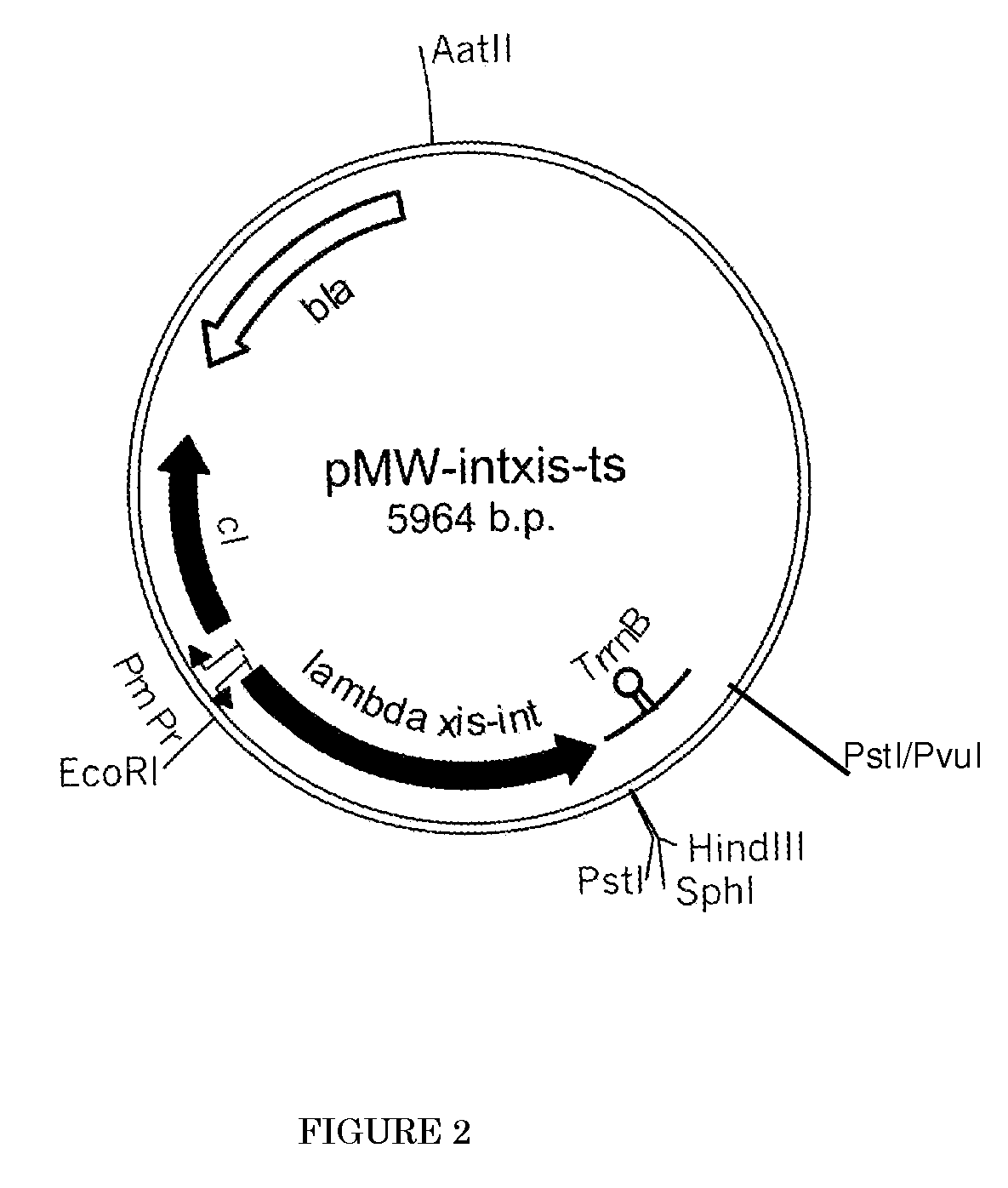L-amino acid producing microorganism which has been modified to inactive the fimH gene, and a method for producing I-amino acid
a technology of l-amino acid and inactive fimh gene, which is applied in the field of fertilization microorganisms, can solve the problems of reducing the adhesion activity of type i fimbrial adhesin protein and l-amino acid production, and achieves the effect of improving enhancing the productivity of l-amino acid producing strains
- Summary
- Abstract
- Description
- Claims
- Application Information
AI Technical Summary
Benefits of technology
Problems solved by technology
Method used
Image
Examples
example 1
[0121]Construction of a Bacterium which is Modified to not Produce Type I Fimbrial Adhesin Protein
[0122] Construction of a Strain in which the Genes cadA and ldcC Encoding Lysine Decarboxylase are Destroyed
[0123]First, a strain that does not produce lysine decarboxylase was constructed. Lysine decarboxylase is encoded by the cadA gene (GenBank Accession No. NP—418555, Seq. ID No. 42) and the ldcC gene (GenBank Accession No. NP—414728, Seq. ID No. 44) (see International Application Publication WO96 / 17930). The parent strain employed here was strain WC196. This strain was named Escherichia coli strain AJ13069 and was deposited on Dec. 6, 1994, as deposit number FERM P-14690, at the National Institute of Bioscience and Human-Technology, Agency of Industrial Science and Technology (currently the International Patent Organism Depositary, National Institute of Industrial Science and Technology, an Independent Administrative Institution, Central 6, 1-1-1 Higashi, Tsukuba, Ibaraki, Japan Po...
example 2
[0162]Evaluation of the L-Lysine Production of a Strain which does not Produce Type I Fimbrial Adhesin Protein
[0163]The glycerol stocks of these strains were melted, 100 μL amounts were uniformly plated onto L plates containing 20 mg / L of streptomycin, and the strain were cultured for 24 hours at 37° C. About ⅛ of the bacterial cells obtained on each plate was inoculated onto a 20 mL fermentation culture containing 20 mg / L of streptomycin in a 500 mL Sakaguchi flask and cultured for 48 hours at 37° C. in a reciprocating shaking incubator. After culturing, the amount of L-lysine that had accumulated in the medium was measured by a ordinary method (Sakura Seiki, Biotech Analyzer AS210).
[0164]The composition of the fermentation medium is shown below (unit: g / L).
[0165]
Glucose40(NH4)2SO424K2HPO41.0MgSO4•7H2O1.0FeSO4•7H2O0.01MnSO4•5H2O0.01Yeast extract2.0Up to 1 L
[0166]The medium was adjusted to pH 7.0 with KOH and sterilized for 10 min at 115° C. in an autoclave (the glucose and MgSO4.7H...
example 3
[0170]Evaluation of the L-Threonine Production of a Strain which does not Produce type I Fimbrial Adhesin Protein
[0171]B-5318 was employed as the L-threonine-producing parent strain which does not produce type I fimbrial adhesin protein. Strain B-5318 was deposited on Nov. 19, 1987, under registration number VKPM B-5318 with the Russian National Collection of Industrial Microorganisms (VKPM), GNII Genetika. The strain which does not produce type I fimbrial adhesin was constructed from the L-threonine producing bacterium by the same method as in Example 1 by employing synthetic oligonucleotides SEQ. ID Nos. 7 and 8. Specifically, the following fimH deficient strain was constructed. B-5318ΔfimH-cat was derived from strain B-5318 by method (1) in Example 1. Strain B-5318 and strain B-5318ΔfimH-cat were cultured for 24 hours at 37° C. on L agar medium containing 20 mg / L of streptomycin sulfate and L agar medium containing 20 mg / L of streptomycin sulfate and 25 mg / L of chloramphenicol, r...
PUM
| Property | Measurement | Unit |
|---|---|---|
| temperature | aaaaa | aaaaa |
| temperature | aaaaa | aaaaa |
| pH | aaaaa | aaaaa |
Abstract
Description
Claims
Application Information
 Login to View More
Login to View More - R&D
- Intellectual Property
- Life Sciences
- Materials
- Tech Scout
- Unparalleled Data Quality
- Higher Quality Content
- 60% Fewer Hallucinations
Browse by: Latest US Patents, China's latest patents, Technical Efficacy Thesaurus, Application Domain, Technology Topic, Popular Technical Reports.
© 2025 PatSnap. All rights reserved.Legal|Privacy policy|Modern Slavery Act Transparency Statement|Sitemap|About US| Contact US: help@patsnap.com


